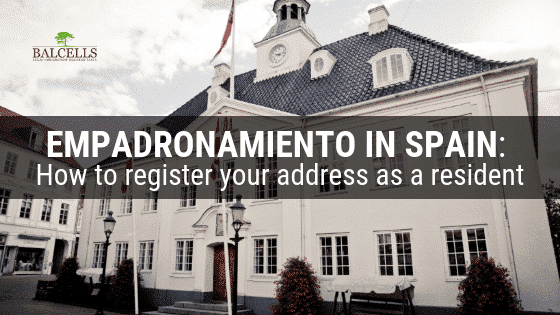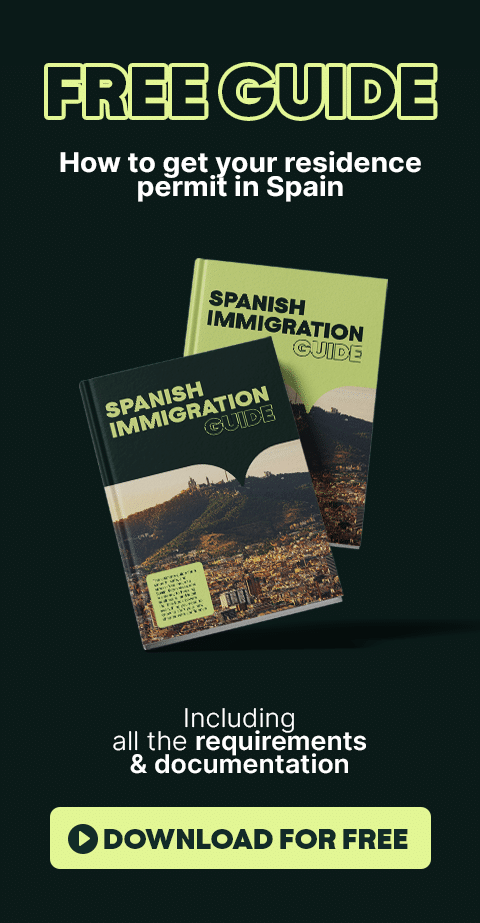Many individuals planning to move to Spain have heard that they need to “empadronarse”. But, what exactly is that? Which purpose does it serve? In this article, we will cover all the related information regarding this process. What is it all about, when should you do it, and how.
WHAT IS “EMPADRONAMIENTO”?
That is something any individual living in Spain has to do. The law forces you to do so.
And, in fact, is a simple process.
Empadronarse means registering yourself as a resident in the town hall of the city or town you will be living in. To simply put it, the certificado of empadronamiento is an official registry that indicates where you live.
It is the basic process you’ll need to go through once you enter the country.
Why? Because many subsequent legal procedures will require you to demonstrate your “padrón” or registry certificate. For example, the vast majority of immigration procedures will require you to attach this document, like the work permit application procedure.
This is the definitive proof that demonstrates that you are correctly applying trough the immigration office located in your province; and not in one that does not correspond to you.
Quick Spanish lesson so you don’t miss anything out
As it can be sometimes a bit difficult to follow, here are the basics you will need in order to completely understand this procedure.
When we say “padrón” we are referring to the census record in which the town hall of any city or town lists all its inhabitants. “Empadronarse” means registering on this municipal register.
When exactly will you need the “Certificado de Empadronamiento”?
As we have mentioned, there are many legal processes that will require you to bring this document. For example:
- Applying for your residency card
- Obtaining your health insurance card
- Getting married in Spain
- Buying a car
- Registering your children in school
- To receive some subsidies or government benefits
Empadronamiento as the best ally for those who are living illegally in Spain
As you may know, you can get residency in Spain after living a certain amount of years illegally in the country. The process called arraigo (social, laboral or familiar) will help you to do that.
Nevertheless, as an immigrant under an irregular situation in Spain, you are required to demonstrate you have lived a certain amount of years in the country.
And how to do it?
If you went through the process of empadronamiento, that is something really simple.
Because if you registered your address in Spain, you will be able to easily demonstrate you have lived a certain amount of months/years in the country.
What is the difference between a certificate and a “volante padronal”?
This distinction is really important.
The “volante padronal” is a document that indicates that you are registered in a specific municipality. However, it does not certify it, since it does not carry with it an official signature from the city hall.
The certificate of registration, on the other hand, does have that signature; therefore it has legal certification capacity.
When you renew documents such as a passport or ID, you will be asked for the certificate at the Police Office.
SHOULD YOU HAVE A RESIDENCE PERMIT IN SPAIN IN ORDER TO REGISTER YOURSELF ON THE TOWN HALL?
No. You can be under an irregular situation in the country and still go through the “empadronamiento” process in Spain. If you bring the required documents, the town hall has the obligation to register yourself in the address you are living, no matter what your situation is.
In fact, you don’t even need an NIE number in order to register. You can just go with your passport and a copy of it, and it will be fine.
STEP BY STEP: HOW TO REGISTER YOUR ADDRESS IN SPAIN (HOW TO “EMPADRONARSE”)
This procedure is really simple, and won’t take much time from you.
If you will start living in Barcelona, you will have to enter to this link and fill out all the blank spaces. In Madrid, for example, the process starts with this link.
You will be required to book an appointment with your local town hall and present all the information there.
Required documents for the resident register
The list of documents you will need to present in order to “empadronarse” are the following ones:
- Housing rental contract, and a copy of it
- Original passport and copy
- Residents register form, filled. It contains your address in Spain and the other individuals who are also living in that same house or flat.
But, what happens if you are renting a room or live with one of your relatives?
Then you will need to submit an authorization from the person who has the rental contract, with a copy of it. Furthermore, his or her ID document will be also required.
And what happens if the person whos is renting a room to you does not want to register you?
This a really common situation, and there are two available options here.
First of all, you can also get a signed document from a third party (who is not the owner of the house but who lives in that apartment) in which she states that you effectively live in that house.
If that option does not work for you, it is also possible to submit other types of proofs that can demonstrate that you live there. For example, invoices or receipts from purchases you’ve done online and received at that address (like the ones from the products you bought on Amazon). The more proofs you submit, the better.
What happens if, once registered, I change my address?
In that case, you will have to refill an application form, but a different from the initial one. For this specific process you must fill out a change of address sheet within the same municipality.
The documents and requirements are the same as in the initial case.
IF YOU NEED HELP WITH YOUR “PADRÓN”… LET US KNOW!
If you would like to avoid going step by step through this legal process, don’t worry. Our immigration lawyer team will help you out.
Book a consultation with one of our lawyers and solve all your doubts:

At Balcells Group we have been foreigners effortlessly moving to Spain for over 11 years. We help expats from all around the world with their immigration, business, tax and legal needs; ensuring a legally safe and enjoyable transition to the Spanish territory. Our multilingual team understands the importance of adapting to the cultural and legal specificities of our international clients. We offer a comprehensive service that combines the expertise of several generations of lawyers with the innovation needed to address today’s legal challenges, always striving to simplify processes and ensure reliable, effective results.




Hi good day, am a Nigerian and I want to migrate to Spain to search for job, how do I go about or how can you help me for my dream to become through, Thanks
Hi Kayode,
Here you have a complete guide that will really help you out when trying to successfully find a job in Spain:
https://balcellsgroup.com/how-to-find-a-job-in-spain/
Hope it helps!
Kind regards.
Please l need passport in Spani
Send us an email at [email protected] and we will help you out!
Hi, I took the Empadronamiento document, after then in 3 hours received an E-mail which is below. Does this mean that my document will not be valid? Or this is about my appointment tries? Thank you.
“Senyor/a,
En relació a la sol·licitud d’alta al padró d’habitants que vau demanar, us comuniquem que no ha estat possible de tramitar-la.
Si necessiteu qualsevol aclariment podeu trucar al telèfon 010 o bé adreçar-vos, amb cita prèvia, personalment a qualsevol de les Oficines d’Atenció Ciutadana de l’Ajuntament.
Atentament,
Direcció d’Atenció al Ciutadà
Ajuntament de Barcelona
http://www.bcn.cat/tramits
Nota: Si us plau, no respongueu directament a aquesta adreça de correu electrònic ja que no és operativa. Per a qualsevol consulta relacionada amb aquesta sol·licitud podeu contactar amb l’Ajuntament de Barcelona trucant al telèfon 010 (*).
Moltes gràcies per la vostra col·laboració. “
Hi,
It means that they haven’t been able to process your application, therefore you haven’t registered successfully. In order to know the reason behind it, please send us an email at [email protected] and we will help you with your registration again, so you don’t get it denied!
Thanks! 🙂
How much time will take get Empadronamiento, after submitting all documents to the Oficina Atenció Ciutadana?
I am living in student residence in Barcelona.
Hi Alex,
You will get empadronamiento the same day you attend to the office to submit the required documents 🙂
Hi, I am German. If I “empadronate” myself and get my Registration Certificate and NIE in Girona can my husband (not EU citizen) get his Tarjeta de Residencia de Familiar de ciudadano de la EU in a different city? Or does it have to be in the same city where I am “empadronada”
Thank you
He can get it in another city!